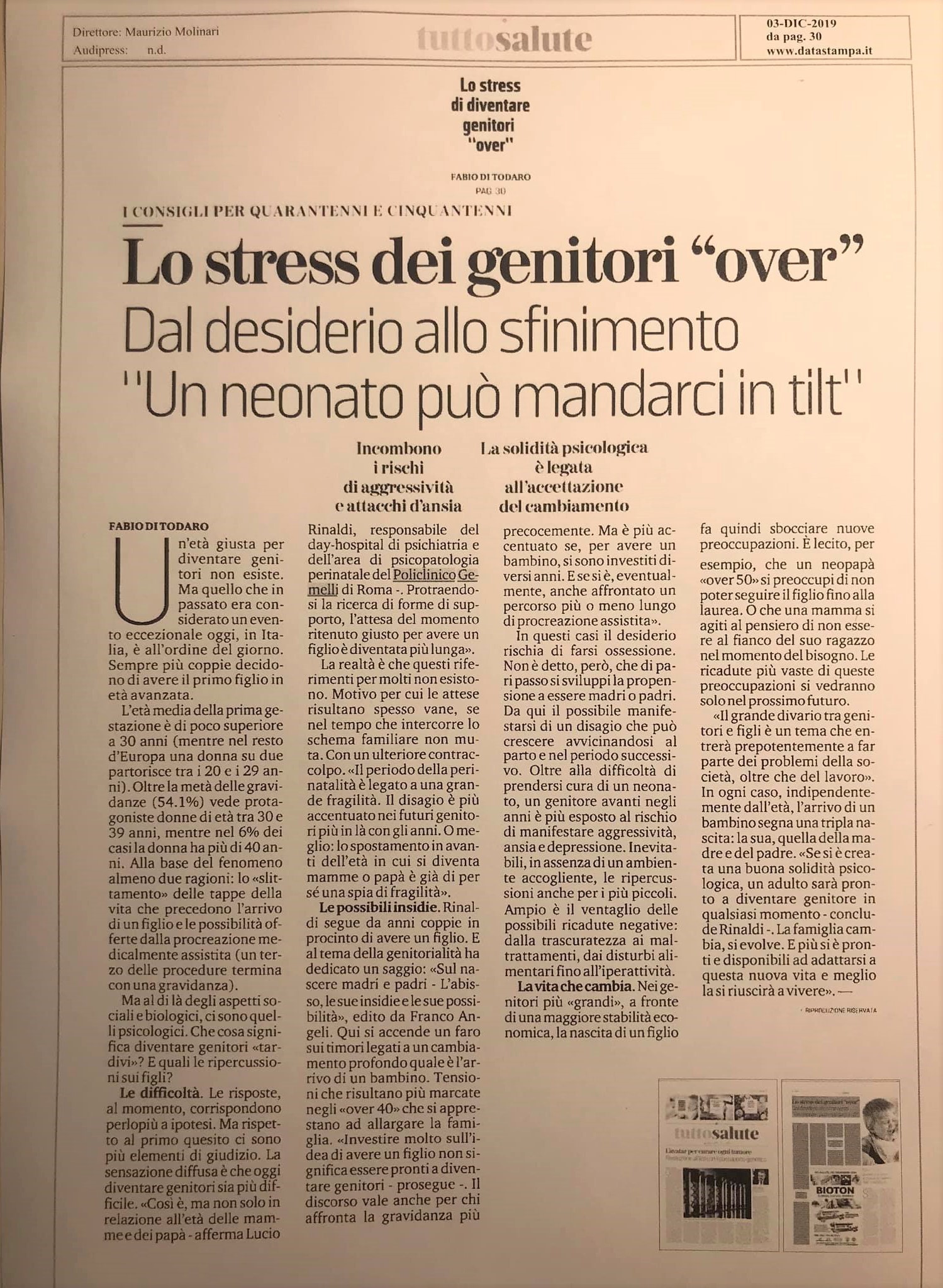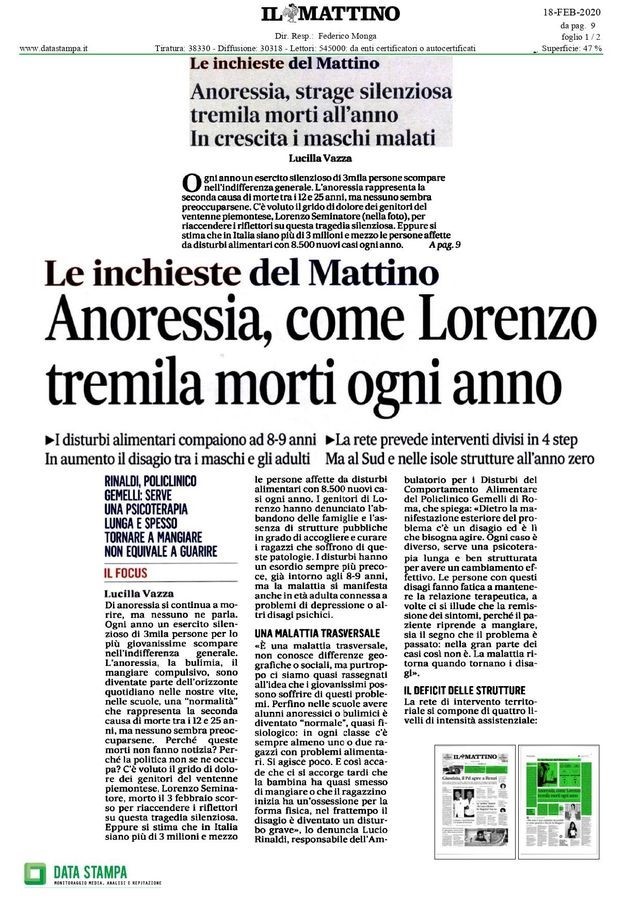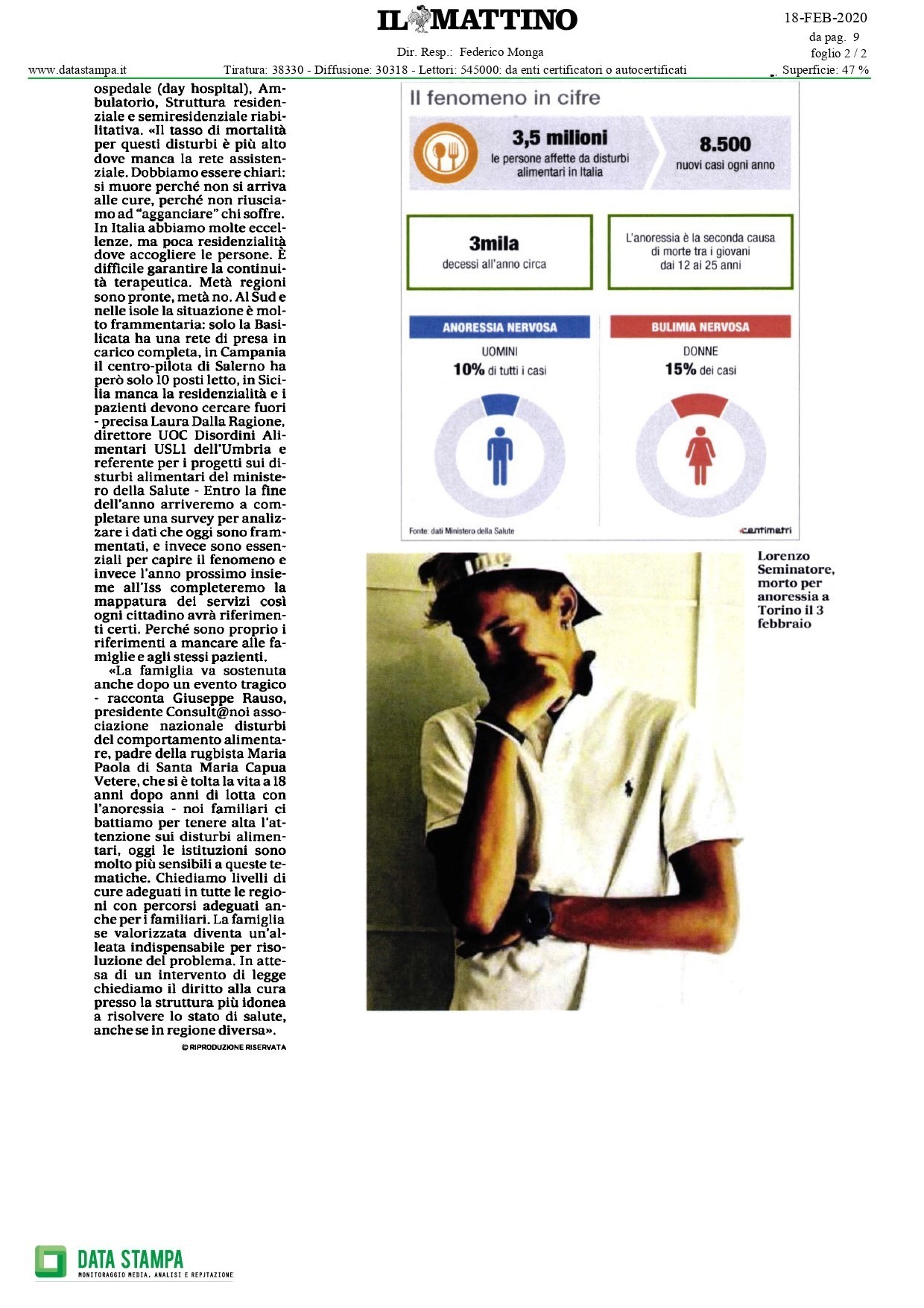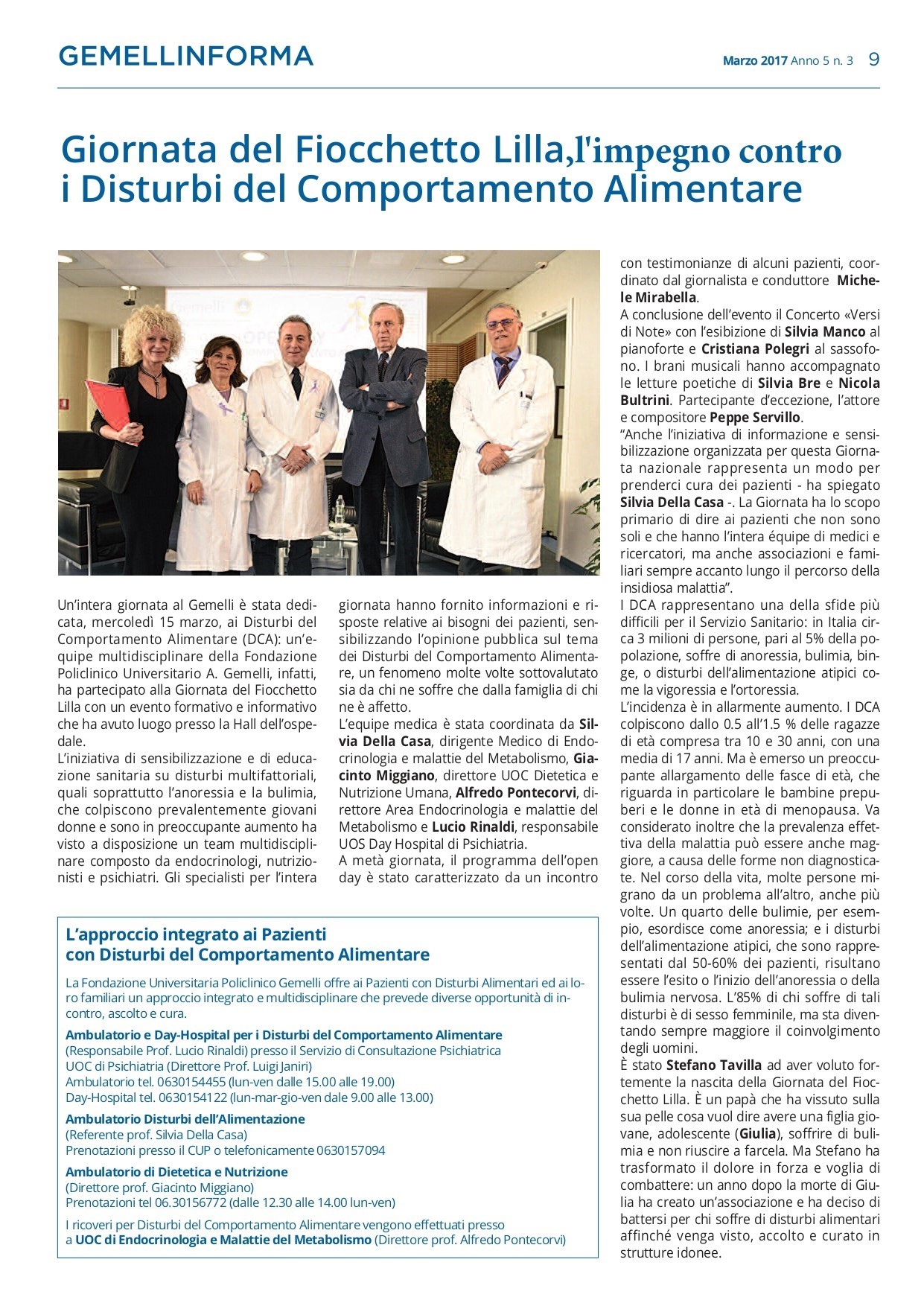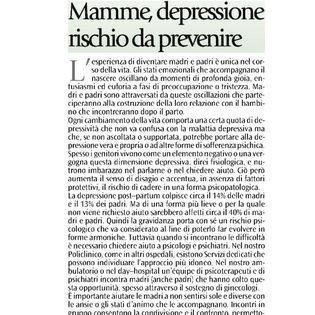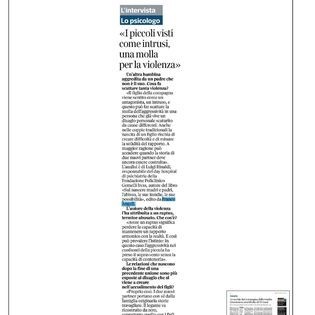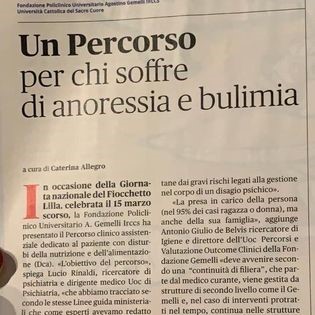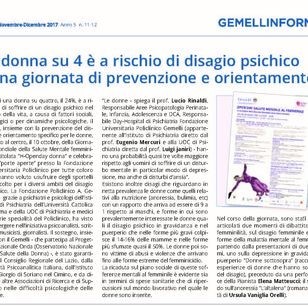Ultime Pubblicazioni
Int J Environ Res Public Health. 2021 May; 18(10): 5281.
Published online 2021 May 16
Caring for Mothers: A Narrative Review on Interpersonal Violence and Peripartum Mental Health
Marianna Mazza, Emanuele Caroppo, Giuseppe Marano, Daniela Chieffo, Lorenzo Moccia, Delfina Janiri, Lucio Rinaldi, Luigi Janiri and Gabriele Sani
Abstract
Interpersonal violence in the perinatal period is frequent and should be considered a prominent health issue due to the risk of escalation of violence and the significant impact on mothers’ parenting after childbirth. Domestic violence during pregnancy can be associated with fatal and non-fatal adverse health outcomes due to the direct trauma to a pregnant woman’s body and to the effect of stress on fetal growth and development. Emotional violence is a risk factor for prenatal and/or postpartum depression. Recent studies focusing on abusive situations during peripartum and possible preventive strategies were identified in PubMed/Medline, Scopus, Embase, and ScienceDirect. All of the available literature was retrospectively reviewed with a special attention to peer-reviewed publications from the last ten years. Results of the present narrative review suggest that perinatal health care professionals (general practitioners, gynecologists, obstetricians, psychologists, psychiatrists) should promptly detect interpersonal violence during and after pregnancy and provide health care for pregnant women. It seems pivotal to guarantee psychological care for abused women before, during, and after pregnancy in order to prevent the risk of depressive symptoms, other mental or physical sequelae, and mother-to-infant bonding failure. There is an urgent need for multifaceted interventions: programs should focus on severalrisk factors and should design tailored care pathways fitted to the specific needs of women and finalized to support them across the lifespan.
ARTICOLO
World J Clin Cases, 2022 Jul 6;10(19):6370-6384. doi: 10.12998/wjcc.v10.i19.6370.
Published online 2022 Jul 6
Pregnancy-related psychopathology: A comparison between pre-COVID-19 and COVID-19-related social restriction periods
Daniela Chieffo, Carla Avallone, Annamaria Serio, Georgios Demetrios Kotzalidis, Marta Balocchi, Ilaria De Luca, Daniele Hirsch, Angela Gonsalez Del Castillo, Pierluigi Lanzotti, Giuseppe Marano, Lucio Rinaldi, Antonio Lanzone, Eugenio Mercuri, Marianna Mazza, Gabriele Sani
Abstract
Background: The coronavirus disease 2019 (COVID-19) pandemic impacted in a still undefined way pregnant women's mental health. There are reports of mood and affect changes in the general population and the suggestion that similar changes occur also in the pregnant population. The greater vulnerability of women during the COVID-19 restriction period may translate into a greater risk for mental disorders in the gestational period. We hypothesised that pregnant women in the pre-pandemic period would have less psychopathology and more psychological support than pregnant women during the pandemic restriction period.
Aim: To compare pregnant women for anxiety, prenatal depression, psychopathology, and social support before and after the awareness of the pandemic.
Methods: We administered to women willing to participate in their 2nd-3rd trimesters of pregnancy the Edinburgh Postnatal Depression Scale (EPDS), the State-Trait Anxiety Inventory Form Y (STAI-Y), and the Symptom CheckList-90-Revised (SCL-90R); we further collected sociodemographic variables and explored women's social support. The comparison was cross-sectional. The first sample was termed nonCOVID-19 because data were gathered before the COVID-19 outbreak (January 2020-February 2020) was declared, and the second sample termed COVID-19 because participants were already subjected to the COVID-19-related restrictive measures (January 2021-February 2021). Since normal distribution was not met (Shapiro-Wilk test applied), we applied nonparametric Mann-Whitney's U-test to compare psychometric tests. Ethical standards were met.
Results: The nonCOVID-19 group reported higher support from partners only, while the COVID-19 group reported multiple support (χ 2 = 9.7181; P = 0.021); the nonCOVID-19 group scored higher than the COVID-19 group only on state anxiety among psychometric scales [STAI-Y1, nonCOVID-19 median = 39 (95%CI: 39.19-51.10) vs COVID-19 median= 32 (95%CI: 30.83-38.90); Mann-Whitney's U=117.5, P = 0.00596]. Other measures did not differ meaningfully between the two groups. Scores on the EPDS, the state and trait subscales of the STAI-Y, and most SCL-90R subscales inter-correlated with one another. The anxiety component of the EPDS, EPDS-3A, correlated poorly with other measures, while it was the Global Symptom Index of the SCL-90-R that correlated most strongly with most measures. Our results are at odds with most literature and do not confirm increased depression and anxiety rates in pregnant women during the pandemic.
Conclusion: The ability of pregnant women to deal with novel generalised threats involves mobilization of inner resources. Increasing sources of social support may have produced anxiolysis in the COVID-19 sample.
Eat Weight Disord, 2022 Feb;27(1):101-108. doi: 10.1007/s40519-021-01145-0. Epub 2021 Mar 4.
Published online 2021 Mar 4
Anomalous self-experience, body image disturbance, and eating disorder symptomatology in first-onset anorexia nervosa
Lorenzo Moccia, Eliana Conte, Marianna Ambrosecchia, Delfina Janiri, Salvatore Di Pietro, Valentina De Martin, Marco Di Nicola, Lucio Rinaldi, Gabriele Sani, Vittorio Gallese, Luigi Janiri
Abstract
Purpose: Anorexia nervosa-restrictive subtype (AN-R) is a life-threatening disorder relying on behavioural abnormalities, such as excessive food restriction or exercise. Such abnormalities may be secondary to an "objectified" attitude toward body image and self. This is the first study exploring the impact of anomalous self-experience (ASEs) on abnormal body image attitude and eating disorder (ED) symptomatology in individuals with AN-R at onset.
Methods: We recruited Italian female participants, 40 with AN-R (mean age 18.3 ± 2.3) and 45 age and educational level-matched healthy controls (HCs) (mean age 18.2 ± 2.6). ASEs, body image attitude, and ED symptom severity were assessed through the examination of anomalous self-experience (EASE), the body uneasiness test (BUT), and the eating disorder examination questionnaire (EDE-Q), respectively. We conducted multivariate analysis of variance to investigate distribution patterns of variables of interest, and mediation analysis to test the effect of ASEs and body image on ED symptomatology.
Results: Individuals with AN-R scored higher than HCs on the EASE (p < .0001). A direct effect of ASEs on ED severity (p = 0.009; bootstrapped LLCI = 0.067, ULCI = 0.240) was found in AN-R. After modelling the effect of abnormal body image attitude, the relationship between EASE total score and ED symptomatology was significantly mediated by BUT (p = 0.002; bootstrapped LLCI = 0.001, ULCI = 0.172).
Conclusion: Although the exact pathways linking AN-R to self-disorder remain to be identified, a broader exploration of transdiagnostic features in AN, including explorations of different dimensions of self-experience and intersubjectivity, may shed further light on the clinical phenomenology of the disorder.





